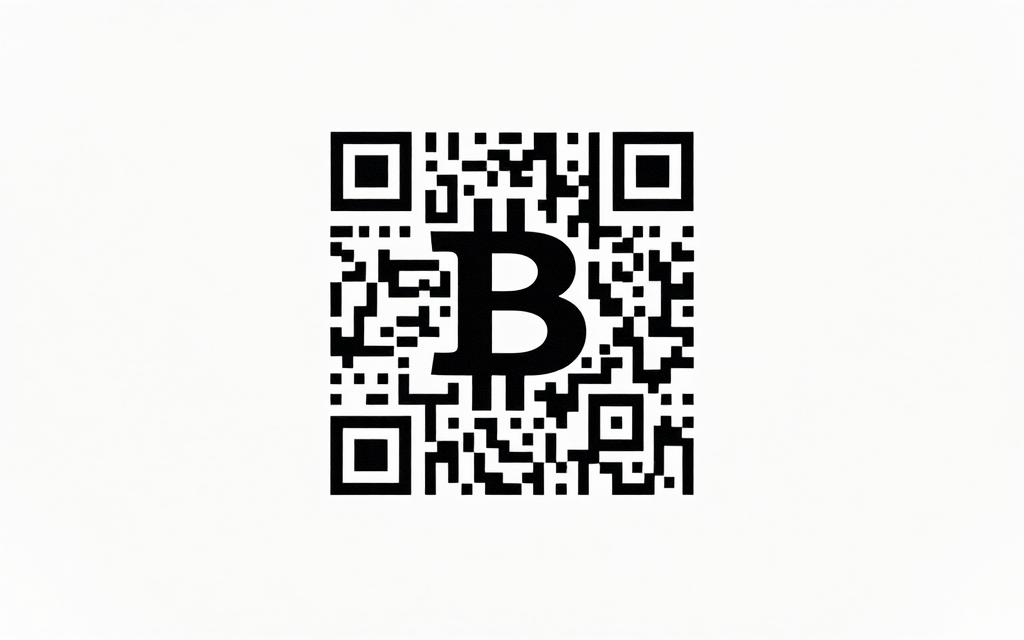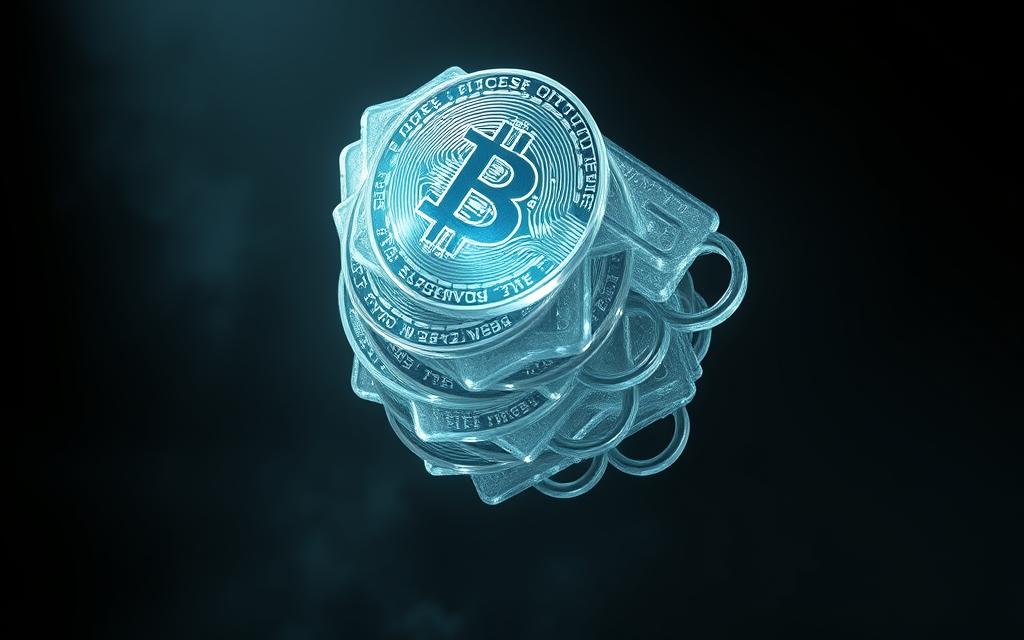Table of Contents
Bitcoin is often misunderstood as a physical form of currency, but in reality, it exists solely in digital form. As a decentralized digital currency, Bitcoin operates on a peer-to-peer network, free from central authority control. This intangible nature of Bitcoin challenges the traditional understanding of what “money” looks like.
Many people are curious about the appearance of Bitcoin, wondering if it has a physical manifestation like traditional currencies. However, Bitcoin is manifested as code, operating through a complex blockchain of approximately 77,000 lines of C++. For those new to the concept, understanding that Bitcoin’s value lies in its digital existence is crucial. To learn more about the fundamentals of Bitcoin, you can visit this resource for a comprehensive overview.
This guide aims to clarify the various ways Bitcoin is represented, both digitally and physically, and help beginners grasp what Bitcoin really “looks like” in different contexts.
The Digital Nature of Bitcoin
As a virtual currency, Bitcoin’s appearance is not physical but symbolic. The essence of Bitcoin lies in its digital existence, represented through its symbol and logo.
Bitcoin as a Virtual Currency
Bitcoin operates entirely in the digital realm, making it a pioneering virtual currency. Its digital nature allows for fast and secure transactions without the need for intermediaries. The concept of Bitcoin challenges traditional notions of currency and value.
The Bitcoin Symbol and Logo
The Bitcoin symbol ₿, featuring two vertical strokes, is a significant representation of the cryptocurrency. It is often accompanied by the official Bitcoin logo: an orange circle with a stylized “B” that includes the two vertical lines. The logo is typically slanted to the right, making it distinctive and easily recognizable. The Bitcoin symbol has become a cultural icon, symbolizing the revolutionary shift in finance that Bitcoin represents.
The design elements of the Bitcoin logo and symbol serve as visual representations of an otherwise intangible asset. The symbol has evolved to signify not just a currency, but a new era in financial transactions. As such, the Bitcoin symbol and logo are integral to the identity of the cryptocurrency, making it identifiable worldwide.
What Does a Bitcoin Look Like in Code?
Diving into the digital realm, Bitcoin’s appearance in code is a fascinating topic that reveals the intricacies of its underlying technology. Bitcoin exists as a series of complex codes and cryptographic algorithms, making its digital representation both secure and unique.
The Blockchain Foundation
The foundation of Bitcoin’s coded appearance lies in the blockchain, a decentralized ledger that records all transactions. This technology ensures the integrity and transparency of Bitcoin transactions, making it a reliable form of currency. The blockchain is maintained by a network of computers around the world, each containing a copy of the entire transaction history. This decentralized nature eliminates the need for a central authority, enhancing security and trust among users.
Bitcoin Wallet Addresses
A Bitcoin wallet address serves as the digital identity for transactions on the blockchain. Each address is a unique string of 26 to 35 alphanumeric characters, typically starting with ‘1’, ‘3’, or ‘bc1’ for different types of addresses. The formation of a Bitcoin address involves transforming a public key through several cryptographic steps, resulting in a secure and unique identifier. Bitcoin addresses facilitate secure transactions without revealing the entire transaction history, ensuring user privacy.
The different types of Bitcoin addresses, such as legacy, SegWit, and Bech32, offer varying levels of efficiency and compatibility. For instance, Bech32 addresses are more streamlined and help reduce transaction fees. QR codes are often used to represent Bitcoin addresses, making it easier to scan and process transactions.

Visual Representations in Digital Spaces
Bitcoin’s digital existence is represented in various forms across different digital platforms. This section explores how Bitcoin is visually represented in digital wallets, exchanges, and on the blockchain.
Representation in Digital Wallets and Exchanges
In digital wallets and exchanges, Bitcoin is often represented through simple icons or symbols. These visual cues help users identify their Bitcoin holdings and facilitate transactions. For instance, a user might see their Bitcoin balance displayed alongside a QR code that represents their wallet address.
The representation of Bitcoin in these platforms is crucial for user interaction. It simplifies the complex underlying technology, making it accessible to a broader audience. Security measures such as two-factor authentication and encryption are also visually represented, reassuring users of the safety of their transactions.
Transactions on the Blockchain
When it comes to the blockchain, Bitcoin transactions are recorded in a public ledger. Each transaction includes a sender’s address, a recipient’s address, the quantity of Bitcoin transferred, a timestamp, and a unique transaction ID (TxID). This information is publicly available and can be viewed through blockchain explorers.
- Blockchain explorers visually represent Bitcoin transactions, allowing users to track the flow of Bitcoin between addresses.
- The components of a Bitcoin transaction, such as the sender’s and recipient’s addresses and the amount transferred, are clearly displayed on the blockchain ledger.
- Transaction confirmations are visually indicated, providing users with real-time updates on the status of their transactions.
The transparency of the blockchain allows anyone to view transaction details, enhancing trust in the system.
Physical Bitcoin Representations
While Bitcoin is a digital currency, its physical representations have garnered significant interest among collectors and enthusiasts. These tangible forms of Bitcoin have not only become unique collectibles but also serve as a bridge between the digital and physical worlds.

Collectible Bitcoin Coins
Collectible Bitcoin coins have become highly sought after by enthusiasts and investors alike. These coins, often made from precious metals like gold or silver, are not just mere representations of Bitcoin but can also be redeemed for the digital currency they represent. The design and denominations of these coins vary, with some featuring intricate designs and security features to prevent counterfeiting.
Casascius Coins are a notable example of collectible Bitcoin coins. Created in 2011, these coins were designed with embedded private keys protected by holographic stickers, allowing owners to redeem the Bitcoin by peeling off the sticker.
Casascius Coins: The Pioneer Physical Bitcoins
Casascius Coins were among the first widely recognized physical Bitcoins, coming in denominations like 0.5 BTC and 1 BTC. The production of these coins ceased by 2013, which has contributed to their growing rarity and value among collectors. The private key embedded in these coins was a crucial feature, as it allowed the owner to access the Bitcoin associated with the coin.
The allure of Casascius Coins lies not only in their historical significance as the first physical Bitcoins but also in their potential to be worth more than the actual Bitcoin they represent, making them highly valuable collectibles. Some Casascius Coins were even minted on a gold coin base, further enhancing their appeal to collectors.
What Does a Bitcoin Look Like in Real Life?
The way Bitcoin looks in real life is a blend of digital and physical elements. While Bitcoin is inherently digital, its presence is felt through various representations in daily transactions.
Daily Transactions and Bitcoin
In everyday transactions, Bitcoin is often represented through QR codes that simplify the process of entering complex Bitcoin addresses. These addresses, typically a string of 26 to 35 alphanumeric characters, are encoded with Base58Check to prevent errors.

The use of QR codes has become a common practice for Bitcoin transactions, serving as a visual interface that makes it easier to share and scan Bitcoin addresses. This method enhances the user experience by reducing the complexity associated with manually entering long addresses.
QR Codes and Public Keys
The relationship between public keys, private keys, and Bitcoin addresses is fundamental to understanding Bitcoin’s security. A Bitcoin address is derived from a public key, while the corresponding private key must be kept secure to prevent unauthorized access to funds.
| Component | Description | Security Consideration |
|---|---|---|
| Bitcoin Address | Publicly visible address for receiving Bitcoin | Derived from public key; not sensitive |
| Public Key | Used to derive Bitcoin address | Not sensitive, but linked to private key |
| Private Key | Must be kept secure to prevent fund loss | Highly sensitive; never share |
By understanding the roles of QR codes, public keys, and private keys, users can better appreciate the security measures in place to protect their Bitcoin transactions.
Common Misconceptions About Bitcoin’s Appearance
Bitcoin’s intangible nature is frequently misunderstood, causing misconceptions about its form. Many believe that Bitcoin must have a physical representation to be valuable, but this is not the case. The reality is that Bitcoin exists solely in the digital realm.
The confusion often arises from physical tokens or coins that are sometimes mistakenly believed to be actual Bitcoins. However, these physical items are merely representations or collectibles and do not store actual Bitcoin value.
The Myth of “Real” Physical Bitcoins
One of the most prevalent myths is that physical Bitcoins are the “real” deal. Casascius coins, for instance, are physical items that were once believed to contain actual Bitcoin value. However, they are simply collectibles or tokens that may or may not be associated with a certain amount of Bitcoin stored elsewhere.
The actual value is stored in the digital form, accessed through private keys. These keys are what grant access to Bitcoin stored in digital wallets, not the physical possession of coins or tokens.
Risks of Confusing Physical Tokens with Actual Bitcoin
Confusing physical tokens with actual Bitcoin can lead to financial risks. For example, if a physical token contains a private key that is not properly secured, it can be stolen, resulting in the loss of associated Bitcoin.
| Risks | Consequences |
|---|---|
| Physical tokens with embedded private keys | Potential theft if not properly secured |
| Misunderstanding physical representations | Financial loss due to scams or mishandling |
| Lack of understanding of private key control | Inability to access or secure Bitcoin |
Understanding that Bitcoin ownership is about controlling private keys and not physical possession is crucial. It’s essential to be aware of the risks associated with physical representations and to store Bitcoin securely in digital wallets.

Conclusion: Understanding Bitcoin Beyond Its Appearance
As we conclude our journey into understanding Bitcoin, it’s clear that its true nature is far more complex than its visual representation. Throughout this guide, we’ve explored the various forms and representations of Bitcoin, from its digital existence on the blockchain to physical manifestations like Casascius coins.
The key takeaway is that Bitcoin’s true value lies in its digital form, as entries in a global ledger, rather than in any physical representation. While visual representations, such as those in wallets and exchanges, serve important functions, they are symbolic until backed by verifiable private keys.
The evolution of how we perceive value is a significant aspect of Bitcoin’s impact. We’re shifting from traditional notions of value tied to physical assets like gold coins to intangible digital assets. This shift underscores the importance of understanding Bitcoin’s technological foundations, including its decentralized nature and the role of blockchain technology.
As cryptocurrency becomes more mainstream, the visual identity of Bitcoin will continue to evolve. However, it’s crucial to remember that Bitcoin’s value comes from its utility, scarcity, and network effects, not physical properties. To safely interact with Bitcoin, one must understand the importance of controlling private keys and using legitimate digital channels.
In conclusion, understanding Bitcoin beyond its appearance is essential for anyone entering the cryptocurrency space. By focusing on its digital nature and the underlying technology, we can better appreciate the revolutionary impact of this new form of currency on our fundamental understanding of what money looks like.
FAQ
Is Bitcoin a physical currency?
No, Bitcoin is a digital currency that exists only in electronic form. It is not tangible like traditional currencies.
What is the Bitcoin symbol?
The Bitcoin symbol is ₿, a stylized letter “B” with two vertical lines through it. This symbol is often used to represent Bitcoin in financial contexts.
How is Bitcoin stored?
Bitcoin is stored in digital wallets, which can be software-based or hardware-based. These wallets use private keys to secure and manage Bitcoin transactions.
Are physical Bitcoin coins legitimate?
Physical Bitcoin coins, such as Casascius coins, are collectibles that can contain a private key or a hidden amount of Bitcoin. While they resemble traditional coins, their value lies in their digital content or collectibility.
What is the blockchain?
The blockchain is a public ledger that records all Bitcoin transactions. It is a decentralized, digital record book that ensures the integrity and security of the Bitcoin network.
How do Bitcoin transactions work?
Bitcoin transactions involve the transfer of Bitcoin from one digital wallet to another. These transactions are verified by nodes on the Bitcoin network and recorded on the blockchain.
Can I hold Bitcoin in my hand?
While you can’t hold actual Bitcoin in your hand, you can hold physical representations like collectible coins or tokens that may contain or represent a certain amount of Bitcoin.
What is a Bitcoin wallet address?
A Bitcoin wallet address is a unique string of characters that identifies a specific wallet on the Bitcoin network. It is used to receive Bitcoin from other users.
Are QR codes related to Bitcoin?
Yes, QR codes are often used to represent Bitcoin wallet addresses or public keys, making it easier to share and scan them for transactions.









